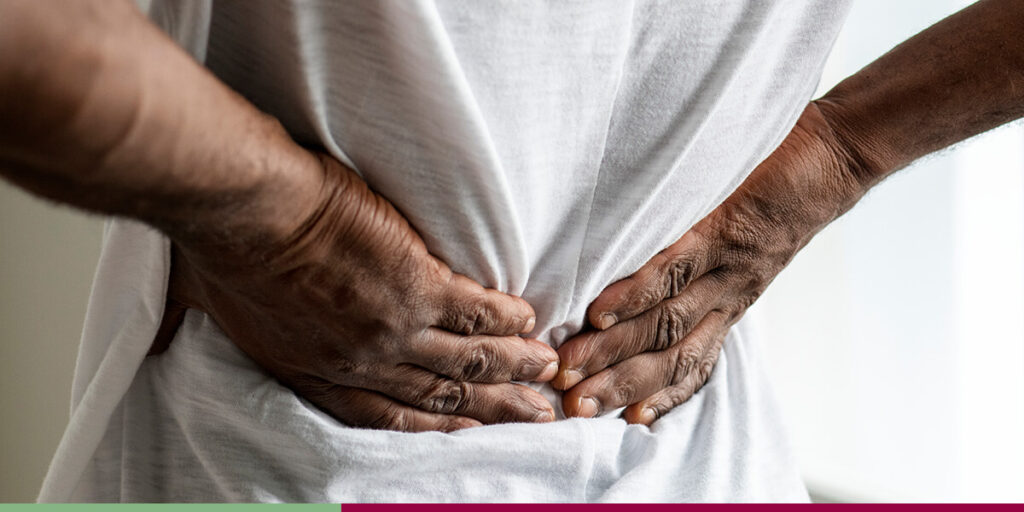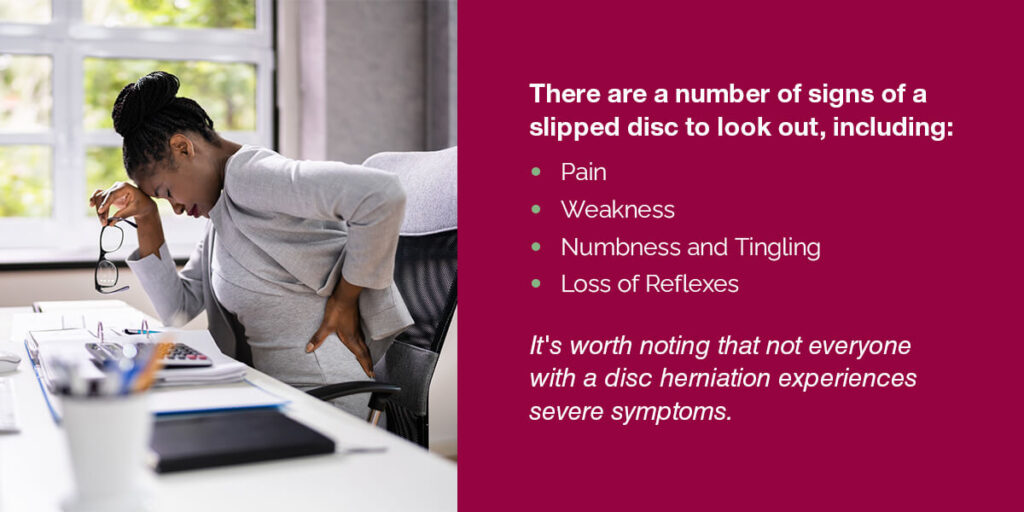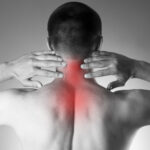Guide to Disc Herniations: Tips for Coping with Disc Herniations
Guide to Disc Herniations: Tips for Coping with Disc Herniations

Few structures in the human body are as vulnerable as the spinal discs. These intervertebral cushions, nestled between the vertebrae of our spine, play a pivotal role in facilitating movement, absorbing shocks and maintaining structural integrity. When these discs encounter stress, trauma or the passage of time, they can falter, leading to one of the most complex spinal conditions, disc herniation.
Disc herniation can be debilitating and have far-reaching effects, making it an unwelcome and life-altering guest for those who experience it. Like any challenge, it’s a hurdle you can tackle with knowledge, guidance and a proactive approach to spinal health.
Table of Contents
What Is a Herniated Disc in the Back?
Disc herniation is a painful and often debilitating spinal condition that affects millions worldwide. In fact, up to 2% of people get it yearly. Understanding what it is and how it occurs can help anyone dealing with this condition or looking to prevent it.
The Disc Anatomy
Your spine consists of a series of vertebrae separated by intervertebral discs. These discs serve as shock absorbers, allowing your spine to move flexibly while maintaining stability. Each disc consists of two main parts:
- Annulus fibrosus: The tough outer layer of the disc, composed of concentric layers of fibrous tissue. It encases the softer inner core.
- Nucleus pulposus: The central, gel-like core of the disc, which contains a high water content. This core provides cushioning and facilitates spinal movement.
The Mechanism of Disc Herniation
Disc herniation occurs when the inner nucleus pulposus protrudes or bulges through a tear or weakened area in the annulus fibrosus. This protrusion can compress nearby nerves, leading to pain, weakness, numbness or tingling sensations, often radiating down the arms or legs, depending on the affected spine region.
Common Herniated Disc Causes
The precise causes of disc herniation can vary but are typically associated with factors such as:
- Age and degeneration: As we get older, the spinal discs undergo wear and tear, becoming less flexible and more prone to damage. The water content in the discs decreases, making them less effective at absorbing shock and providing cushioning. This age-related degeneration is known as disc degenerative disease and is a leading cause of disc herniation, particularly in people over the age of 30.
- Trauma and injury: Sudden traumatic events, such as car accidents, falls or sports injuries, can cause disc herniation. The forceful impact or twisting motions associated with these incidents can lead to tears or ruptures in the annulus fibrosus, allowing the nucleus pulposus to protrude and compress nearby nerves.
- Repetitive strain and poor posture: Repetitive activities that involve bending, lifting and twisting, especially when performed with improper body mechanics, can contribute to disc herniation.
- Genetics and family history: If you have a family history of spinal problems, you may be more susceptible to disc issues due to genetic factors affecting your spinal discs’ strength and resilience. While you can’t change your genetics, being aware of this risk factor can help you take preventive measures.
- Smoking and lifestyle factors: Nicotine and other chemicals in cigarettes can damage the blood vessels that supply nutrients to the spinal discs, making them more vulnerable to degeneration.
Common Symptoms of a Herniated Disc in Lower Back

There are a number of signs of a slipped disc to look out, including:
- Pain: Individuals with disc herniation may experience intermittent or constant back, neck or limb pain. This pain often occurs due to the compression of nerves by the protruding disc material.
- Weakness: Muscle weakness, particularly in the arms or legs, can be a sign of disc herniation. This weakness results from nerve compression, which disrupts the normal functioning of the affected muscles.
- Numbness and Tingling: Sensations of pins and needles, often radiating down the limbs, are common with disc herniation. These sensations occur as a result of nerve irritation or compression.
- Loss of Reflexes: Reduced or absent reflexes in affected areas can indicate disc herniation. Nerves that control reflexes may be compromised when a disc presses against them.
It’s worth noting that not everyone with a disc herniation experiences severe symptoms. In some cases, it may be asymptomatic or cause only mild discomfort.
5 Tips for Coping
Coping with disc herniations can be challenging, as the condition can lead to persistent pain and discomfort. However, there are effective strategies and lifestyle changes that can help individuals manage their symptoms and improve their quality of life.
1. Seek Professional Chiropractic Guidance
If you suspect or have been diagnosed with a disc herniation, consult with a chiropractor who is a spine specialist and treats patients with herniated discs on a daily basis. They can diagnose accurately, recommend appropriate care options and create a tailored management plan.
Our gentle chiropractic approach does not utilize twisting, turning or popping. Instead, utilizing a gentle correction, it is designed to decompress herniated discs and restore balance to the spine and the entire nervous system. Correcting the proper spinal mechanics and alignment often addresses the cause of herniated discs instead of just covering up the symptoms. We utilize Quantum Spinal Mechanics3 and Cox Flexion-Distraction to address cervical, thoracic and lumbar disc herniations.
2. Physical Therapy
Another professional to consult with a physical therapist. Physical therapists can develop exercise programs that strengthen the muscles supporting the spine and improve flexibility. They can also teach you proper body mechanics to reduce strain on your back.
3. Lifestyle Modifications
Pay attention to your posture when sitting, standing and lifting objects. Make your workspace and home more ergonomically friendly with chairs that offer lumbar support. Set up your computer monitor at eye level and arrange your work area to minimize twisting and bending.
4. Exercise and Rehabilitation
Engaging in exercises that strengthen the core muscles can provide stability to the spine, reducing the risk of further injury. Consult a physical therapist or fitness trainer for a safe and effective exercise routine.
Try to include low-impact activities into your exercise routine. Exercises like swimming, walking or cycling are a great place to start. These activities can help maintain your fitness level without putting excessive strain on your spine.
5. Mind-Body Techniques
Yoga and pilates practices focus on stretching, flexibility and relaxation. They can benefit individuals with disc herniations as they improve posture and reduce muscle tension.
As stress can exacerbate pain and discomfort, incorporate relaxation techniques like meditation or deep breathing exercises into your daily routine to manage it.
Consult With Upper Cervical Chiropractic of Monmouth, LLC
Seeking professional guidance and care will give you the advice and support needed when dealing with disc herniations. Consulting experts in the field, like Upper Cervical Chiropractic of Monmouth, LLC, can provide you with the tailored solutions you need.
Contact us directly to find out if our care could benefit your case.

Dr. Arbeitman
Dr. Arbeitman, a trailblazing figure in Upper Cervical Chiropractic, established Upper Cervical Chiropractic of Monmouth, LLC in 2005. Dedicated to promoting holistic wellness, he has empowered countless individuals to embrace Upper Cervical Chiropractic care as an integral part of their health journey. Graduating Magna Cum Laude from Logan College of Chiropractic and holding a Bachelor of Science in Kinesiological Sciences from the University of Maryland at College Park, Dr. Arbeitman is a licensed practitioner in New Jersey who has met the rigorous standards set by the National Board of Chiropractic Examiners. Beyond his extensive educational achievements, he has earned multiple scholarships and accolades for his academic prowess and exemplary clinical performance. Dr. Arbeitman's holistic approach encompasses spinal and nervous system care, lifestyle guidance, fitness evaluation, and nutritional expertise, all founded on the belief that the doctor-patient relationship is paramount to the healing process.





